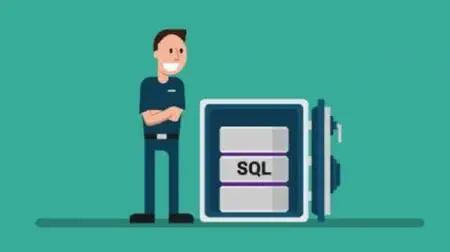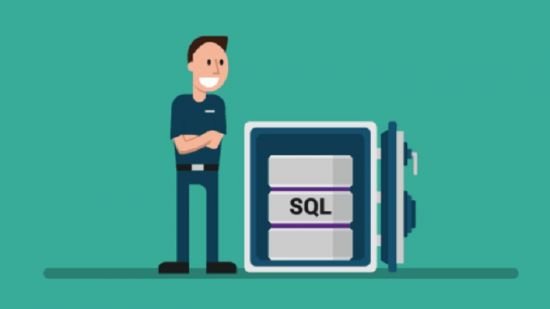SQL Server : The complete course about BACKUP and RESTORE
MP4 | Video: h264, 1280x720 | Audio: AAC, 44.1 KHz, 2 Ch
Genre: eLearning | Language: English + srt | Duration: 27 lectures (2h 26m) | Size: 1 GB
MP4 | Video: h264, 1280x720 | Audio: AAC, 44.1 KHz, 2 Ch
Genre: eLearning | Language: English + srt | Duration: 27 lectures (2h 26m) | Size: 1 GB
This course (3 hours) will teach you all the subtleties of BACKUP and RESTORE on SQL Server 2019
What you'll learn:
How to make very simply a BACKUP and a RESTORE
Discuss the BACKUP LOGS and DIFFERENTIAL BACKUP, and implement them in your BACKUP strategy.
Understand the interest of the WITH INIT in a BACKUP
we will see the different full recovery model on a database (FULL,SIMPLE and BULKED LOGGUED)
The performance when doing a BACKUP on several files.
Avoiding corruption on BACKUPs with the CHECKSUM
Understand the importance of BACKUP WITH COPY ONLY to avoid breaking the BACKUP chain during the day.
To discover that you can make a RESTORE of a page, or from a LSN, to avoid losing hours of RESTORE, in case of server crash.
Recover unsaved logs, in case of server crash, with the power of the TAIL LOG BACKUP.
We will discuss the BACKUP WITH COMPRESSION,to save disk space, which can be significant
and the simultaneous copy of BACKUP with the WITH MIRROR option.
We will also see how to restore system databases (Master, MSDB, model, TEMPDB).
The RESTORE WITH STANDBY, which allows to examine the data between each RESTORE.
Understand what is a CHECKPOINT on your SQL Server engine
And to finish, we will see how to make a RESTORE from a SNAPSHOT, see the necessary rights, to make BACKUP, how to consult BACKUP metadata.
Requirements
Just one computer, with Management Studio installed
Description
Did you know that you can perform with your BACKUP?
Are you sure you have an effective and robust BACKUP strategy in place?
Have you ever heard of the TAIL LOG BACKUP ?
This course is divided into two chapters:
The first part, is the beginner's level part, where we will discuss the :
How to make very simply a BACKUP and a RESTORE.
Discuss the BACKUP LOGS and DIFFERENTIAL BACKUP, and why it is absolutely necessary to implement them in your BACKUP strategy.
Understand the interest of the WITH INIT in a BACKUP, and learn how to make a restoration in time with the WITH STOPAT option.
And finally, we will see the different full recovery model on a database(FULL,SIMPLE and BULKED LOGGUED), and why this is (very) important for our BACKUPs.
The second part, which is longer, is the part of a more advanced level, we will discuss :
The performance when doing a BACKUP on several files.
Avoiding corruption on BACKUPs with the CHECKSUM, and understanding the importance of BACKUP WITH COPY ONLY, to avoid breaking the BACKUP chain during the day.
To discover that you can make a RESTORE of a page, or from a LSN, to avoid losing hours of RESTORE, in case of server crash.
Recover unsaved logs, in case of server crash, with the power of the TAIL LOG BACKUP.
We will discuss the BACKUP WITH COMPRESSION, to save disk space, which can be significant, and the simultaneous copy of BACKUP with the WITH MIRROR option.
We will also see how to restore system databases (Master, MSDB, model, TEMPDB).
The RESTORE WITH STANDBY, which allows to examine the data between each RESTORE.
And to finish, we will see how to make a RESTORE from a SNAPSHOT, see the necessary rights, to make BACKUP, how to consult BACKUP metadata.
Why start SQL administration?
SQL Server is one of the skills very actively sought after on the job market.
Administering an SQL server today is ensuring that you have a full-time job.
No demo is longer than 10 minutes (so it won't be too soporific).
Moreover, SQL Server, because of its simplicity, allows you to quickly become competent in very specific areas.
Following this course will help you to stand out technically from your colleagues, or during a job interview, I guarantee it.
Who this course is for
Future Database Administrators (DBA)
Developers who want to learn about SQL
BI consultants working on technologies other than SQL Server (Oracle etc…)
Students who want to get started on SQL
Tech leads (CRM, Web etc…) who want to discover SQL



